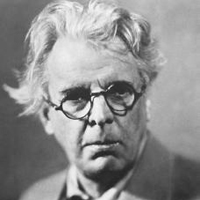Lapis Lazuli by William Butler Yeats: Introduction
Lapis Lazuli written in March 1938 is a kind of a precious blue stone. The Lapis Lazuli referred to in this poem was given to Yeats on his seventieth birthday (as a present) by Mr. Harry Clifton. Clifton had sent him a present of a great piece carved by some Chinese sculptor into a semblance of a mountain, with temple, trees, paths, and an ascetic, and a pupil about to climb the mountain.
